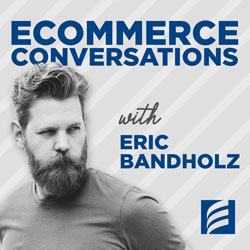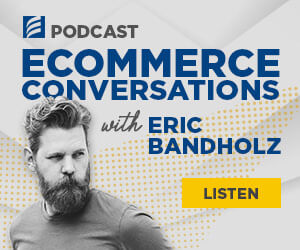Doubtless you have heard the term “blog.” Bloggers, as they are called, have been credited with bringing down key political and media figures like former Senate Majority Leader Trent Lott and CBS news anchor Dan Rather.
Your teenager might use a blog to chronicle his or her daily activities. You might have heard about high-profile celebrities who blog about their careers and personal lives. Nevertheless, can these “personal online journals and diaries” really be used as a marketing tool for your ecommerce business?
You bet they can, if you know how to use them.
What is a blog?
From a technical standpoint, a blog is just an easy-to-use web-based content management system. It is software that allows people with little or no technical background to update and maintain content. Updating a blog is known as “blogging,” while someone who keeps a blog is a “blogger.” Entries written to the blog, called posts, are arranged in reverse chronological order with the most recent additions at the top of the page.
But what makes a blog such a unique publishing format, different from a typical website, message board, or email application, is its balanced combination of technology and personality.
Technically speaking, a blog could be used for any information update, whether a press release, product update, news, or more personal commentary. Let’s face it: The application doesn’t care what content is put into its form fields.
What differentiates a blog from other forms of content publishing is the style in which a blog post is written. Blogs beg to be written in an informal, punchy, and “authentic” voice, something Internet pioneer Doc Searls called an “email to everyone.” A well-written blog reflects the writer’s passions, biases, thoughts, and judgments. It has heart as well as substance.
However, personality and style alone are not enough to fully convey the power of blogs. We have to go back to the technology side to complete the picture.
Blog technology provides an ability to do something no other content management medium does, at least not as well: stimulate conversation. Blog readers can comment on what you have written and have those comments appear on the site. They can ask questions, state opinions, tell stories, or relate their particular point of view. You can respond, either on the blog through a comment of your own or via email.
Blogs enable dialogue between you and a customer or prospect, making cultivating a long-term relationship more plausible.
How can a blog benefit my business?
Let’s outline nine tangible benefits that blogs offer an ecommerce business:
- Search engine marketing. Blogs give you an increased presence on major search engines. The technology is a magnet for search engines like Yahoo! and Google. A well-written, routinely updated, keyword-oriented blog can enhance your chances of garnering high rankings on search engine return pages. Why is this? Google, in particular, indexes sites based on the text on your site.
- The words comprising your site’s content, whether on the home page or in the blog, are like currency to search engines. The more times a certain word or phrase, or a combination of words and phrases, is used on your Web site, the more likely Google, for example, will index your site highly based on that word or phrase. The reasoning is simple: Google ranks pages based on keywords by relevance.
- Direct communications. Blogs allow business owners to speak directly, openly, and honestly with their customers.
- Brand building. Blogs serve as another channel to promote your brand and products.
- Competitive differentiation. Because blogs allow you to tell your story repeatedly in a manner considered hip within the interactive community, they help set you apart from the competition.
- Relational marketing. Blogs allow you to build personal, long-lasting relationships with your customers that foster trust. One person put it this way: “A blog is a continual tour with a guide you get to know.”
- Exploit the niches. Blogs help you fill your particular industry niche.
- Media & public relations. Blogs are excellent PR tools. The media calls you, not your competition.
- Position yourself as an expert. Blogs enable you to articulate your viewpoints, knowledge, and expertise on matters related to your industry.
- Low cost. Blogs are inexpensive to set up, operate, and maintain. Ongoing marketing costs are minimal. They do require an investment of time in blog posting, but it can pay big returns for the time spent.
How to measure a blog’s effectiveness
For small business owners looking for immediate and measurable ROI, blogs have yet to become sophisticated enough to measure in such a way that sales could generally, but directly, be tied to them. However, savvy blog entrepreneurs use them to manage specific campaigns.
Let’s say your small business is adding perfume to your lineup of cosmetic products. Starting a blog on women’s health and beauty, where your perfume is featured and discussed, could be tied to sales by adding “tokens” or “variables” to links from these blogs to your online store. When a transaction is completed, this token or variable can be written to a database and associated with that sale.
Voila. You can measure specific sales campaigns and a blog’s effectiveness in promoting them. Of course, it requires a bit of technical setup; however, it’s a common technical process. A programmer with even moderate skills should be able to complete something like this within a day.
Which businesses are using blogs?
Lincoln Sign Company
Businesses of all types are using blogs in several ways. One of the best-known small business bloggers is J.D. Iles, owner of Lincoln Sign Company. Iles maintains a blog separate from his company Web site and uses it to promote his business, generate goodwill with his customers and as a means for readers to get to know him and his family.
When asked why he started blogging, Iles said: “I wanted something I could update whenever I wanted with little effort and present fresh information to my customers regularly. “It occurred to me that if I had a way to show a customer a daily progression of jobs and events through our shop, a customer could get a good, overall view of what we do daily. In effect, they could get a ‘shop tour’ whenever and wherever they were, and see us at our best and brightest.”
Iles testifies to the fact that the blog has generated new business for Lincoln Sign and serves as a creative outlet as well.
Cards Direct
Cards Direct is an online greeting card company specializing in personalized Christmas and business greeting cards for family, friends, or clients.
According to Cards Direct’s vice-president of marketing, David McNaught, the company recently started a blog to provide helpful articles and information regarding custom greeting cards and holiday greetings for business and personal use. The company promotes particular cards in its blog posts, but refrains from making a sales pitch. Even though the content is more informational, McNaught indicated the blog serves as an adjunct sales channel to complement their ecommerce Web site. Though they lack specific statistical data, he said that traffic from search engines has “skyrocketed” thanks largely to the blog.
The blog also serves a customer service function by answering questions frequently asked by consumers.
Clip-n-Seal
Clip-n-Seal is an innovative consumer product. It’s a plastic rod and clamp device, in various sizes, that seals bags securely. The company has embraced blogs wholeheartedly to the point that its blog has become the company’s primary marketing channel.
Brand manager Scott Benish indicated that staff members blog on company and product news. They also link to other blogs and encourage links to theirs. The result has been a marked increase in traffic and orders. Since its debut two years ago, the company has had over 1.25 million hits on the Clip-n-Seal site, with 35,000 pieces sold.





